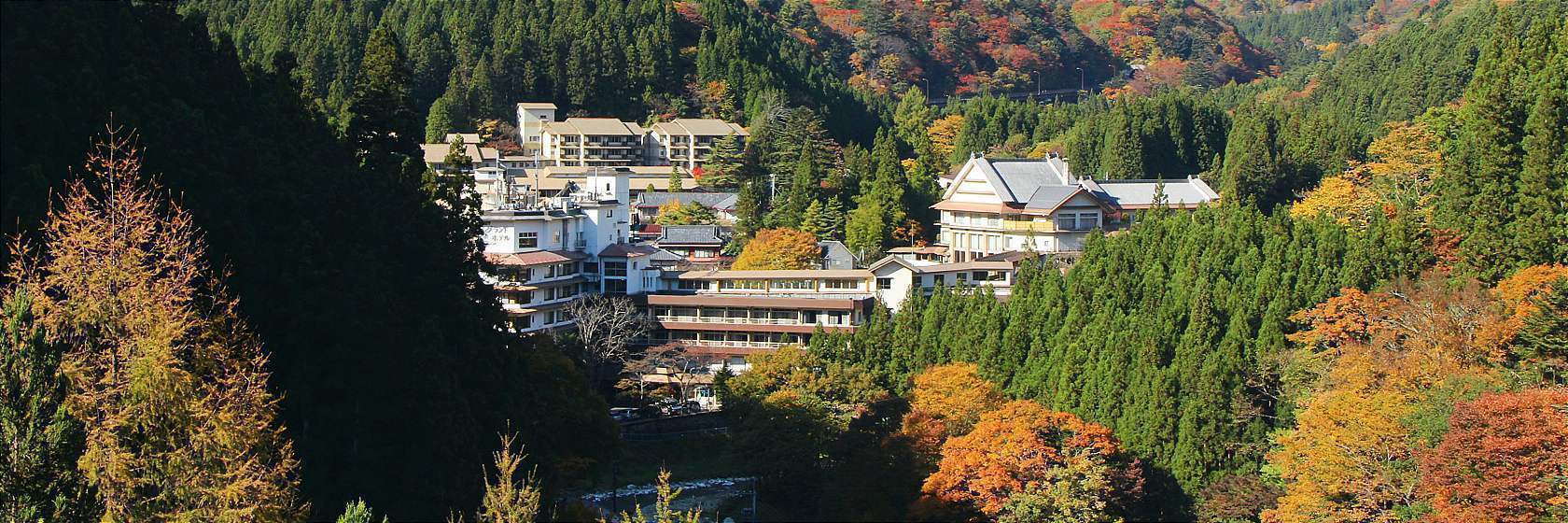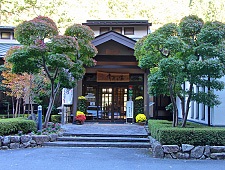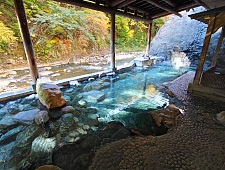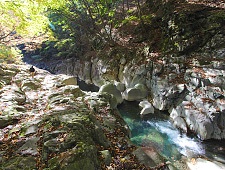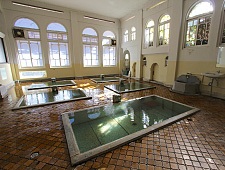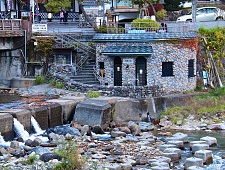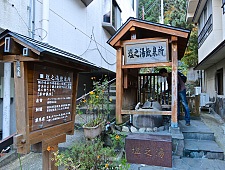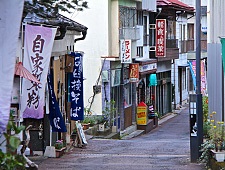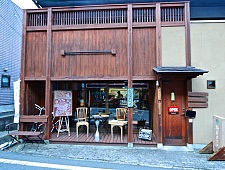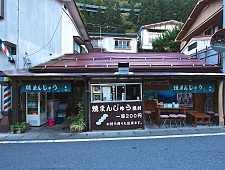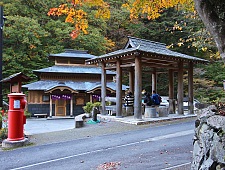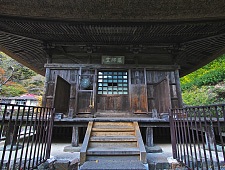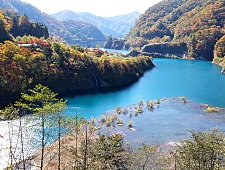Shima Onsen (四万温泉, lit. "Forty-thousand Hot Spring") is a sleepy hot spring town in the northwest mountains of Gunma Prefecture. Considered among the top four hot spring towns in the prefecture (alongside Kusatsu, Minakami and Ikaho), Shima Onsen is also thought to be one of the oldest in Japan. It is so named because it was once said that bathing in its abundant spring waters could heal as many ailments as its name implies.
With over 40 separate hot spring sources within its borders, the town relishes in its resources with dozens of ryokan, public bath houses, foot baths and hot spring water drinking fountains for visitors to enjoy. Despite its many attractions, Shima has managed to keep itself from becoming overdeveloped, preserving a small-town atmosphere. Nestled in a mountain valley, it also boasts a beautiful natural backdrop of mountains, waterfalls, a reservoir lake and a river that winds through the town. In autumn, the trees covering the slopes around the valley offer great views of autumn colors, usually peaking between late October and early November.
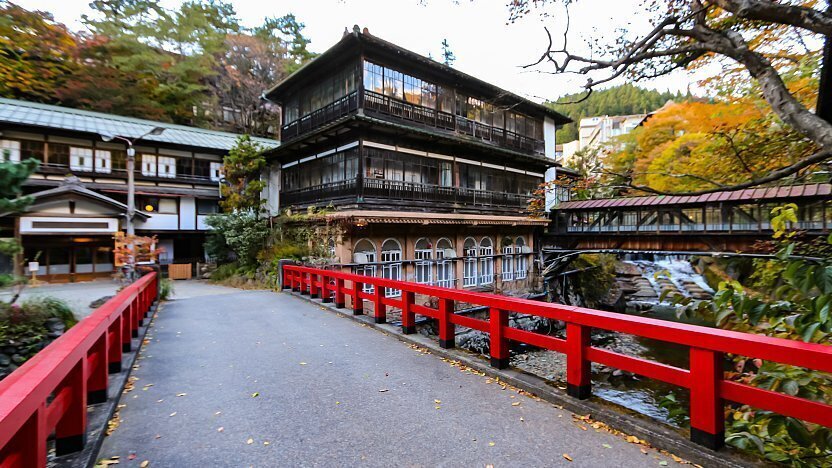
Shima Onsen is spread along the Shima River Valley and has three distinct town areas, each about a kilometer away from the other. The lower town area near the southern entrance to the valley is perhaps the quietest and is home to some of Shima's nicest riverside ryokan. The river also forms a small but beautiful gorge known as the Kamagafuchi Abyss in this area.
The central town area is the heart of Shima, where visitors can stroll down narrow streets lined with small shops, nostalgic game arcades, foot baths and drinking fountains. Many of the town's ryokan and hotels are located in this area, including the standout Sekizenkan, a centuries-old ryokan with a beautifully preserved Taisho Era Roman-style indoor bath.
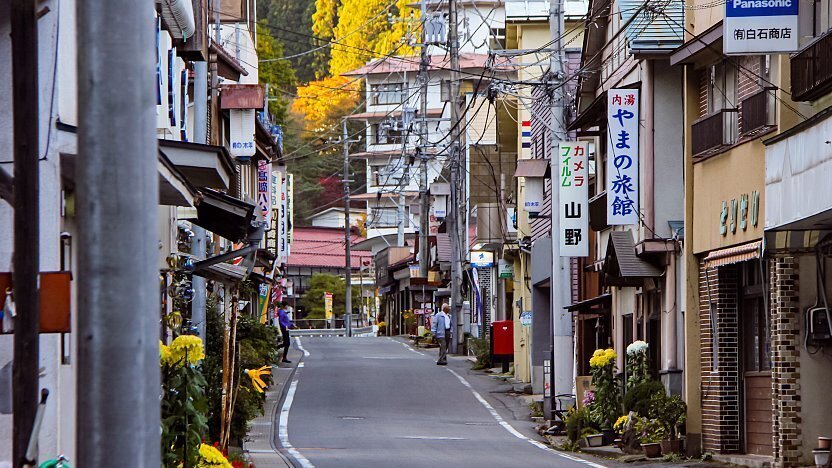
The upper town area is furthest back into the valley and higher in elevation than the lower areas. In this area you can bathe in the town's earliest discovered hot spring source at the Gomusoyu public bath or pray at the nearby Yakushido Temple which is dedicated to the town's founding. At the very end of the valley lies Okushima Lake, a reservoir lake formed by the Shimagawa Dam, as well as several waterfalls.
While the lower and central town areas are navigable on foot and are within reasonable walking distance of each other, the upper town area is more spread out and less amenable to pedestrians, especially in the remote Okushima Lake area. Buses run only as far as the Shima Onsen bus terminal in the central town. A rental car is recommended for exploring all of Shima's areas at your own pace.
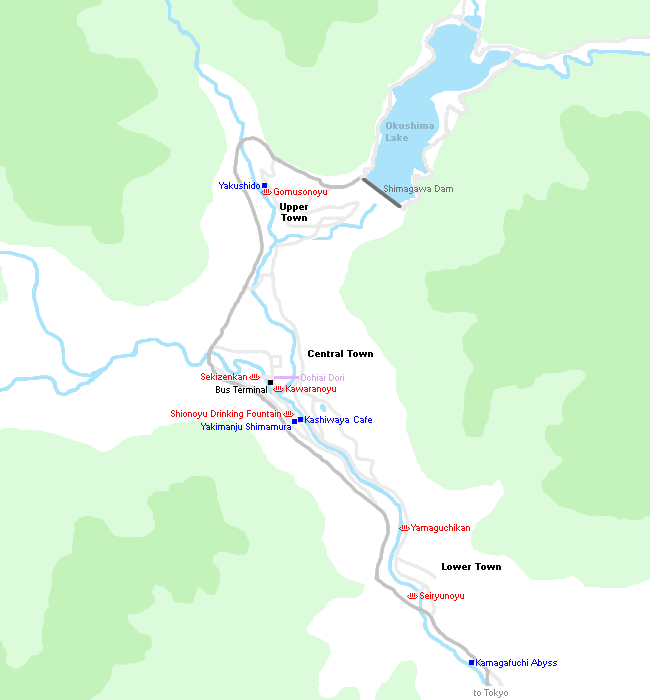
Lower town area
Central town area
Upper town area
Getting there and around
By train and bus
By train you can travel as far as Nakanojo Station, from where there are buses to Shima Onsen (50 minutes, 1050 yen, every 40-70 minutes). The Japan Rail Pass, JR Tokyo Wide Pass, JR East Nagano Niigata Area Pass, JR East Tohoku Area Pass and JR East South Hokkaido Pass are valid on the trains to Nakanojo Station, but do not cover the bus to Shima Onsen.
There are several ways to reach Nakanojo Station from Tokyo. The most convenient option is the direct JR Kusatsu limited express which connects Tokyo's Ueno Station and Nakanojo in about two hours for around 4500 yen. However, there are only 2-3 trains per day.
For more frequent (but more expensive) connections, take the JR Joetsu Shinkansen or Hokuriku Shinkansen to Takasaki Station (about one hour, around 5000 yen, frequent departures) and transfer to the JR Agatsuma Line to Nakanojo Station (about one hour, 770 yen, one train per hour).
Alternatively, you can do the whole trip by local trains, which takes about 3.5 hours, requires a transfer of trains at Takasaki or Shin-Maebashi and costs 2640 yen one way from central Tokyo (e.g. from Tokyo, Shinjuku or Ueno stations).
By highway bus
Kanetsu Bus operates one or two direct highway buses per day between Tokyo (Tokyo Station Yaesu Exit) and Shima Onsen. The one way ride takes 3.5 hours and costs 3500 yen. A round trip ticket is available for 6200 yen. For timetables and online reservations, click here.
By car
As Shima Onsen is fairly spread out, a rental car can make exploring the area easier than relying on public transportation. Rental car outlets are available at Takasaki Station. The drive takes about 1.5 hours from Takasaki Station or 45 minutes from Nakanojo Station. There are parking lots available next to most of the town's main attractions, including a large parking lot in the central town area. Most ryokan also provide free parking for their guests.
Questions? Ask in our forum.
